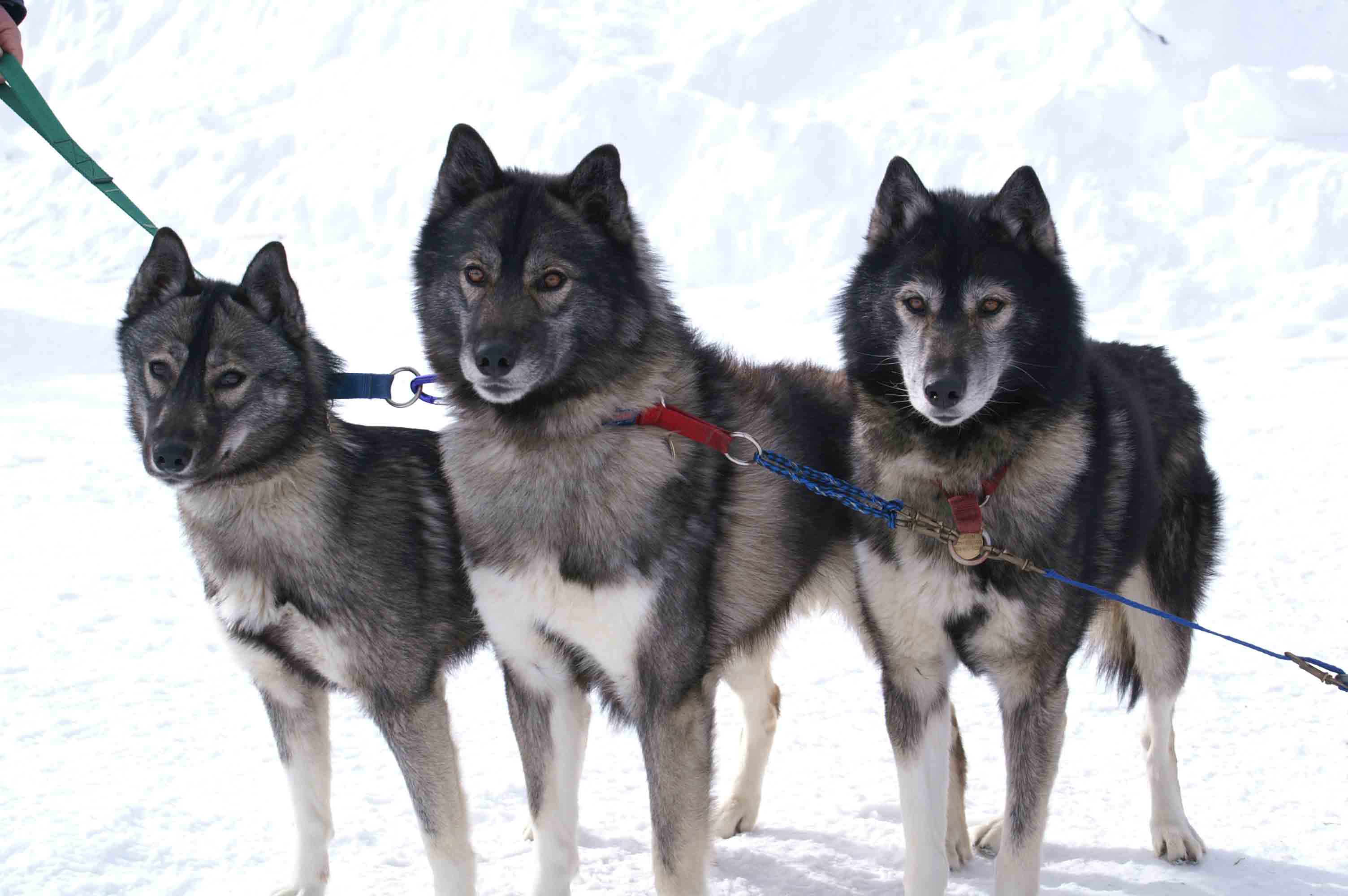Siberian Husky colors vary and many people and lovers of Siberian Huskies hold mistaken impressions in regards to what the “right” and acceptable colors of the Siberian Husky are; this is true of Siberian Husky coat colors as well as of Siberian Husky eye color. In this quick overview, you’ll find out what the truth about Siberian Husky coat and eye color is, which may make choosing a Siberian Husky an easier task for you.
Coat Colors Of The Siberian Husky
Many people are under the impression that Siberian Huskies are either black and white or gray and white; often, these people will assume that a dog of any other color is either not a Siberian Husky or not a purebred Siberian Husky.
The truth is that Siberian Huskies can be of almost any color ranging from white to black. And within those colors, a number of patterns can emerge. Some of the common colors and patterns found in Siberian Huskies include:
Black & White
Siberian coats can come is two shades of Black. These are: Jet Black, and Diluted Black.
The undercoat of a black & white Siberian may be white, charcoal, beige, or a mixture of these three. The top coat can be a range from jet black to a dilution, making the dog look almost grey. The dilution also gives the coat depth of color. A red tint is also allowed to the black. This red hue is quite rare, and develop when a black dog is exposed to the sun for long periods of time. When blowing the coat, a black Siberian can appear grey.

A Siberian with a dilluted black coat
The 3 Greys
Siberian coats can come is three shades of grey. (Black based with dilution genes present resulting in greys) These are: Wolf Grey, Silver, and Medium/Dark Grey.
Wolf Grey is an allowance of the agouti gene which gives off a warm shade of grey with beige, tan, or red behind the ears, on the legs, and the back. Undercoat is beige. Pigment is restricted per individual hair. This coat gives off a rich color with lots of depth. Not to be confused to sable coated Siberians.
Silver is the complete opposite of a wolf grey. There is a complete restriction of the agouti gene. The coat comes off with a silvery or blue tone. There is no red, tan, or beige. The silver Siberian’s undercoat is white. Black can often tip the hair. When a dilution factor is present the shade of silver can become even more blue, with pigment being slate colored.
Medium/Dark Grey is the most common of the grey colorings. It allows red or tan tones, but not to the fullest depth. The richness of the red or tan is reduced but not completely cut out. Undercoat is a mixture of beige and silver.

Siberian showing a medium/dark grey coat
Pure White
Pure white is perhaps the rarest coat color of Siberians. A white Siberian can have liver or black points(the color of the nose and skin around the eyes). This color, or lack thereof, is a result of the complete restriction of color pigments and extension of white over the dog’s entire body. Undercoat is white.
Agouti colored Siberians are equally rare. It is also called “wild coloring”. Agouti siberians usually have special masks and markings. White markings are always cream. The mask is always dark, very heavy. (Dirty faced). Pigment extends far down on the dog’s body. No dilution is present. Undercoat of agouti Siberians is charcoal. The outer coat can be a mixture of black, tan, red, or grey. The usual coloring is black on the root and tip of the hair, with red or tan in the middle. Points are black. Sometimes mistaken for sable or wolf grey. An agouti Siberian should look almost exactly like a wolf in coloring.
Copper/Red
Perhaps the most shade variation can be seen in the coats of Red & white Siberians. (Red dogs with black points are considered Sable).
Red & white Siberians always have liver points. Their undercoat can be copper, light red, or cream. Dilution factors can fade the coloring from dark to light across the body. Can be chocolate colored, to almost white.
An “orange” copper Siberian allows more than than red. The result is a red Siberian with a very light coat.
A “chocolate” copper (also called chocolate red) Siberian has a tone with full depth of color. A brown or liver undercoat is present. This is the darkest possible red coloration.
A “red” copper Siberian allows more red than tan. This brings out a bright color, and can sometimes give off an orange hue.
Sable
The Sable coated Siberian always has black points and black tipping on the fur. Undercoat is a shade of red, one of the three listed above, but never beige as in wolf-grey coats. Pigment is restricted with full allowance of color. Dilution factors never influence shade. Another very rare coat color. Some sables are born a wolf grey color, but the red tone deepens as time goes on. Sometimes called “black-nosed Reds”.
The pinto is not a color, rather a pattern. A pinto siberian can be any of the above colors, except white. The pinto Siberian has an excess of white, usually over the shoulders and front legs.
Piebald Pattern
Also a pattern the piebald is white with irregular patches of any other color. It is quite rare in Siberians. White is in excess of 30%. This breaks up the coloration of the Siberian, giving the Siberian spots and unique markings.
Woolly Coats
Although the Siberian Husky has a double coat, the hair should not be excessively long. Long or woolly hair is a fault in a show dog Siberian. The long hair collects snow, possibly causing irritation. It is also a concern because it takes longer to dry, a dangerous fault in extremely cold weather.
More about The Breed
[the-post-grid id=”6818″ title=”About the Breed”]












